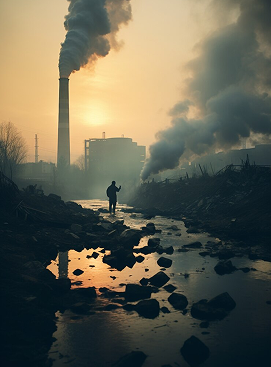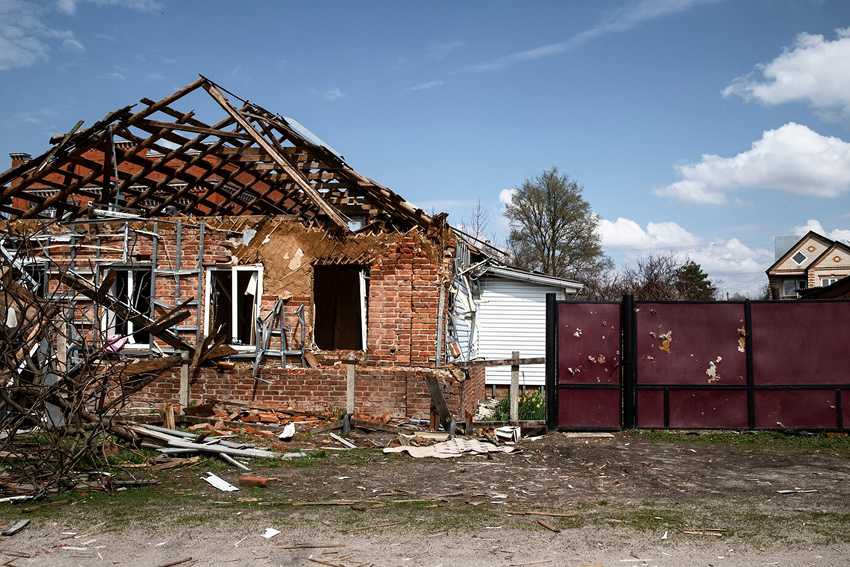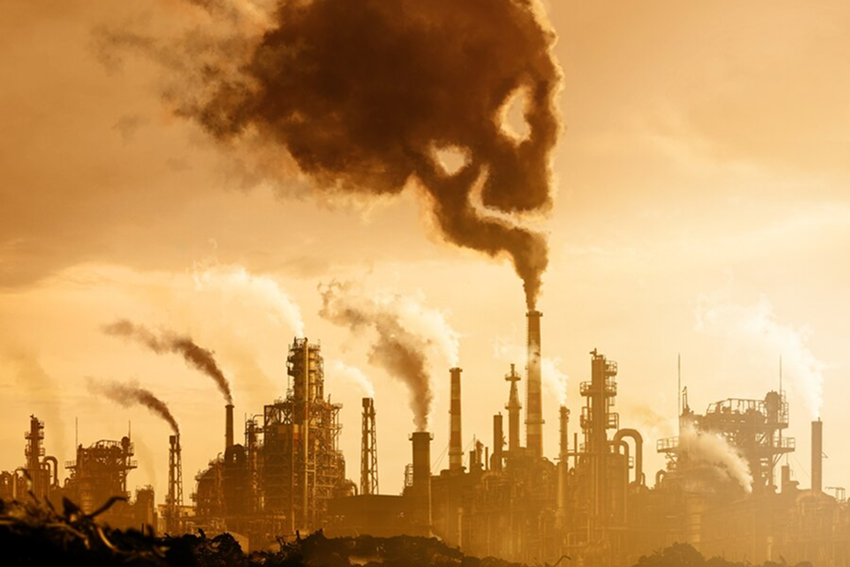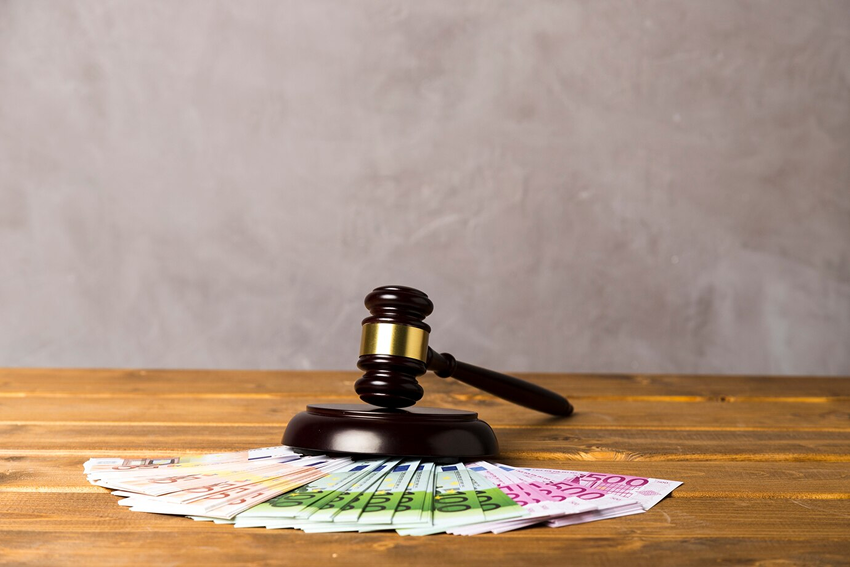Public Liability (1991 Act Based) Liability Insurance
The Public Liability Insurance Act, 1991 ensures businesses handling hazardous substances provide immediate compensation to victims after industrial accidents.
- Statutory Compliance
- Protection from Legal Liabilities
- Mitigation of Financial Risks
History & Background of Public Liability Insurance Act, 1991
The Bhopal Gas Tragedy, one of the worst industrial accidents, occurred on December 2-3, 1984. A gas leak from the Union Carbide India Limited pesticide plant released deadly Methyl Isocyanate (MIC), killing thousands and severely injuring over 600,000 people. The legal settlement reached after years of litigation resulted in $470 million USD being paid as compensation. This disaster highlighted the need for stronger laws to ensure immediate relief for victims of industrial accidents.
In December 1985, oleum gas leaked from a unit of Shriram Foods and Fertilizers in Delhi, causing deaths and severe injuries. The Supreme Court of India introduced the principle of absolute liability, holding industries entirely responsible for harm caused by hazardous activities, regardless of fault. This decision shaped the foundation of the Public Liability Insurance Act.
In response to these disasters, the Public Liability Insurance Act, 1991 was enacted to:
- Mandate insurance coverage for industries handling hazardous materials.
- Provide immediate, no-fault compensation to victims.
- Establish the Environmental Relief Fund for additional relief.
The Act was a landmark in ensuring that companies dealing with hazardous substances bear the financial responsibility for any accidents.

Legal Provisions under the Public Liability Insurance Act, 1991
The Public Liability Insurance Act, 1991 was established to ensure businesses that handle hazardous substances provide immediate compensation to those affected by accidents. The Act mandates insurance coverage and outlines the relief available to victims of accidents caused by hazardous materials. Below are the key legal provisions:
Mandatory Insurance Coverage
All businesses handling hazardous substances must secure public liability insurance. This insurance provides compensation for third-party claims involving death, bodily injury, and property damage arising from accidents. Failure to comply with this requirement can result in severe penalties, including fines and imprisonment.
No-Fault Liability
Under this Act, companies are held liable regardless of fault or negligence. Victims are entitled to compensation without the need to prove that the business was at fault. Simply being involved in an accident that involves hazardous substances renders the business liable.
Immediate Relief and Compensation
The Act provides for standardized compensation for victims, ensuring immediate financial relief without lengthy legal battles. The compensation schedule includes:
- Medical Expenses: Reimbursement of medical expenses incurred, up to a maximum of INR 12,500 for each case.
- Fatal Accidents: Compensation of INR 25,000 per person for fatalities, along with reimbursement of medical expenses up to INR 12,500.
- Permanent Total or Partial Disability:
- Medical expenses reimbursed up to INR 12,500.
- Cash relief based on the percentage of disability as certified by an authorized physician, with INR 25,000 provided for total permanent disability.
- Temporary Partial Disability: Victims suffering from temporary partial disability, which reduces their earning capacity, are entitled to a fixed monthly relief of up to INR 1,000 for a maximum of 3 months, provided they have been hospitalized for over 3 days and are above 16 years of age.
- Damage to Private Property: Compensation of up to INR 6,000 is provided based on the actual damage caused to private property.
Environmental Relief Fund Contribution
Businesses must contribute to the Environmental Relief Fund, which is used to provide compensation when the responsible party or its insurer is unable or unwilling to fulfill compensation obligations.
Penalties for Non-Compliance
Companies that fail to comply with the Act’s provisions face strict penalties. These include fines ranging from ₹1 lakh to ₹1 crore, and individuals responsible for the company’s operations may face imprisonment for up to seven years. In extreme cases, the authorities may seize assets or halt the business’s operations.
Role of the Collector
The Collector plays a central role in ensuring victims receive compensation. Businesses must report accidents to the Collector, who will then process claims and distribute compensation based on the Act’s schedule.
Claims Process
Victims, or their legal representatives, can file claims within five years of the accident. The claims process is designed to be straightforward, ensuring that victims can easily access relief without unnecessary legal hurdles.
Scope of the Act
The Act applies to industries handling hazardous substances, including chemical plants, refineries, manufacturing units, and businesses involved in the storage or transportation of dangerous materials. It covers accidents that cause bodily injury, death, property damage, and environmental contamination.
Principal/Main Coverage Under Public Liability (1991 Act Based) Insurance

Factors Affecting The Coverage Of Public Liability (1991 Act Based) Insurance
Several factors influence the extent of coverage provided under the Public Liability (1991 Act Based) Liability Insurance. These factors determine the premium, the limits of indemnity, and the scope of the policy:
Nature of Business and Risk Exposure
The type of hazardous substances handled by a business and the level of risk associated with their operations play a key role in determining coverage. Businesses dealing with highly flammable, toxic, or reactive substances may require higher coverage limits.
Scale of Operations
The volume of hazardous materials produced, stored, or transported affects the level of coverage. Larger operations with significant quantities of hazardous materials are at a higher risk of accidents and therefore require broader coverage.
Geographical Location
The proximity of a business to populated areas, public infrastructure, or environmentally sensitive zones influences the coverage requirements. Businesses located near residential areas may need enhanced coverage due to the potential for greater third-party impact in the event of an accident.
Compliance with Safety Standards
Companies that adhere to strict safety and environmental protocols may benefit from more favorable premiums and terms. Non-compliance with industry safety standards, on the other hand, can result in higher premiums and reduced coverage options.
Claims History
A business's history of prior claims or accidents directly impacts the premium and coverage limits. Companies with a clean claims history may receive lower premiums, while those with a history of accidents may face higher premiums or stricter coverage conditions.
Hazardous Substances Handled
The specific nature and classification of the hazardous substances (e.g., flammable, corrosive, or toxic) also determine the level of risk, and consequently, the coverage required.

Nature of Business and Risk Exposure
The type of hazardous substances handled by a business and the level of risk associated with their operations play a key role in determining coverage. Businesses dealing with highly flammable, toxic, or reactive substances may require higher coverage limits.
Scale of Operations
The volume of hazardous materials produced, stored, or transported affects the level of coverage. Larger operations with significant quantities of hazardous materials are at a higher risk of accidents and therefore require broader coverage.
Geographical Location
The proximity of a business to populated areas, public infrastructure, or environmentally sensitive zones influences the coverage requirements. Businesses located near residential areas may need enhanced coverage due to the potential for greater third-party impact in the event of an accident.
Compliance with Safety Standards
Companies that adhere to strict safety and environmental protocols may benefit from more favorable premiums and terms. Non-compliance with industry safety standards, on the other hand, can result in higher premiums and reduced coverage options.
Claims History
A business's history of prior claims or accidents directly impacts the premium and coverage limits. Companies with a clean claims history may receive lower premiums, while those with a history of accidents may face higher premiums or stricter coverage conditions.
Hazardous Substances Handled
The specific nature and classification of the hazardous substances (e.g., flammable, corrosive, or toxic) also determine the level of risk, and consequently, the coverage required.
Why A Company Needs Public Liability (1991 Act Based) Insurance
Statutory Compliance
The Public Liability Insurance Act, 1991 mandates that businesses handling hazardous substances must have this insurance. Non-compliance can result in legal penalties, business shutdowns, and reputational damage.
Protection from Legal Liabilities
Accidents involving hazardous materials can lead to expensive legal claims for bodily injury, death, or property damage. Public Liability Insurance ensures that businesses are financially protected from the burden of compensating third parties.
Immediate Compensation to Victims
In the event of an accident, businesses are obligated to provide immediate compensation under the no-fault liability principle. Public Liability Insurance helps ensure that the company can meet its obligations to provide relief without jeopardizing its financial stability.
Mitigation of Financial Risks
Accidents involving hazardous substances can result in significant financial losses, including legal fees, compensation payouts, and environmental cleanup costs. The insurance policy helps mitigate these risks and ensures the business can continue operations without major disruptions.
Reputation Management
Providing swift compensation through the insurance policy helps maintain the company’s reputation by showing a commitment to the welfare of the public and affected parties. Delays or failures in compensation can lead to negative publicity and loss of business.

Why A Company Needs Public Liability (1991 Act Based) Insurance
Statutory Compliance
The Public Liability Insurance Act, 1991 mandates that businesses handling hazardous substances must have this insurance. Non-compliance can result in legal penalties, business shutdowns, and reputational damage.
Protection from Legal Liabilities
Accidents involving hazardous materials can lead to expensive legal claims for bodily injury, death, or property damage. Public Liability Insurance ensures that businesses are financially protected from the burden of compensating third parties.
Immediate Compensation to Victims
In the event of an accident, businesses are obligated to provide immediate compensation under the no-fault liability principle. Public Liability Insurance helps ensure that the company can meet its obligations to provide relief without jeopardizing its financial stability.
Mitigation of Financial Risks
Accidents involving hazardous substances can result in significant financial losses, including legal fees, compensation payouts, and environmental cleanup costs. The insurance policy helps mitigate these risks and ensures the business can continue operations without major disruptions.
Reputation Management
Providing swift compensation through the insurance policy helps maintain the company’s reputation by showing a commitment to the welfare of the public and affected parties. Delays or failures in compensation can lead to negative publicity and loss of business.
Probable Causes Of Litigation Covered Under Public Liability (1991 Act Based) Insurance
Several scenarios can lead to litigation against companies handling hazardous substances. The Public Liability (1991 Act Based) Liability Insurance policy covers the following probable causes of litigation:
- Accidents Leading to Bodily Injury or Death:
Any accident involving hazardous substances that results in bodily injury, illness, or death can lead to litigation. Victims or their legal representatives may seek compensation for medical expenses, loss of income, and emotional distress. - Damage to Third-Party Property:
Businesses can be sued if their operations cause damage to third-party property. This could include damage to buildings, vehicles, or other personal property due to fires, explosions, or chemical spills caused by the handling of hazardous materials. - Environmental Contamination:
Accidental release of hazardous substances into the environment can result in lawsuits from affected communities, government authorities, or environmental agencies. Companies may face claims for pollution of air, soil, or water sources, requiring extensive cleanup efforts and compensation for affected individuals. - Failure to Adhere to Safety Protocols:
Litigation may arise if businesses fail to comply with prescribed safety protocols or regulations governing the handling of hazardous substances. This could include cases where inadequate safety measures or faulty equipment contribute to accidents. - Mass Disasters:
In the case of large-scale industrial accidents involving multiple victims or significant property damage, businesses may face class-action lawsuits or mass tort claims, making it imperative to have robust public liability coverage in place. - Negligence in Operations:
Litigation may arise when accidents occur due to negligent practices, such as improper storage of hazardous substances, inadequate safety measures, or failure to maintain equipment used in handling dangerous materials.
Factors Determining The Limit Of Indemnity/Sum Insured Under Public Liability (1991 Act Based) Insurance
Paid-Up Capital or Maximum Liability
The sum insured is based on the company’s paid-up capital or a maximum of INR 50 crores, whichever is lower, ensuring that coverage aligns with the financial strength of the business.
Turnover of the Business
The business’s annual gross turnover, including levies and taxes, plays a significant role in determining the limit of indemnity. For manufacturing units, warehouse owners, and transport operators, various parameters such as sales or rental receipts are considered to assess the exposure and determine the appropriate sum insured.
Nature and Quantity of Hazardous Substances Handled
The nature and quantity of hazardous substances handled by the business impact the required limit of indemnity. Higher volumes of hazardous or highly toxic, flammable, or corrosive substances increase the risk and, therefore, the coverage needed.
Geographical Location and Population Density
Businesses operating near densely populated areas or environmentally sensitive zones require higher coverage due to the increased risk of third-party bodily injury or property damage in case of an accident.
Risk Exposure of Operations
The operational risk, such as the geographic location, proximity to populated areas, and the nature of activities, directly affects the limit of indemnity. Operations with higher risk exposure demand higher limits to cover potential third-party claims for bodily injury, death, property damage, or environmental contamination.

Factors Determining The Limit Of Indemnity/Sum Insured Under Public Liability (1991 Act Based) Insurance
Paid-Up Capital or Maximum Liability
The sum insured is based on the company’s paid-up capital or a maximum of INR 50 crores, whichever is lower, ensuring that coverage aligns with the financial strength of the business.
Turnover of the Business
The business’s annual gross turnover, including levies and taxes, plays a significant role in determining the limit of indemnity. For manufacturing units, warehouse owners, and transport operators, various parameters such as sales or rental receipts are considered to assess the exposure and determine the appropriate sum insured.
Nature and Quantity of Hazardous Substances Handled
The nature and quantity of hazardous substances handled by the business impact the required limit of indemnity. Higher volumes of hazardous or highly toxic, flammable, or corrosive substances increase the risk and, therefore, the coverage needed.
Geographical Location and Population Density
Businesses operating near densely populated areas or environmentally sensitive zones require higher coverage due to the increased risk of third-party bodily injury or property damage in case of an accident.
Risk Exposure of Operations
The operational risk, such as the geographic location, proximity to populated areas, and the nature of activities, directly affects the limit of indemnity. Operations with higher risk exposure demand higher limits to cover potential third-party claims for bodily injury, death, property damage, or environmental contamination.
Claims History
Businesses with a history of frequent or high-value claims may face higher required indemnity limits and premiums, as insurers assess their risk profile based on past incidents.
Statutory Requirements
The Public Liability Insurance Act, 1991, mandates specific statutory obligations for businesses, such as compensation for medical expenses, death, or property damage. Companies must ensure their sum insured meets these legal requirements.
Environmental Exposure
Companies operating near sensitive ecological areas, such as water bodies, forests, or farmlands, require higher indemnity limits to cover potential environmental contamination or cleanup claims.
Compliance with Safety Standards
Businesses that adhere to stringent safety and environmental standards may benefit from favorable coverage terms. Non-compliance may result in higher premiums or reduced coverage options.
Add-On Coverages For Public Liability (1991 Act Based) Insurance

General Exclusions Under Public Liability (1991 Act Based) Insurance
This policy does not cover liability for the following:
Punitive & Exemplary Damages
Any claims for punitive or exemplary damages are excluded.
Fines & Penalties
Liabilities arising from fines or penalties imposed on the insured are not covered.
War, Civil War, or Act of Foreign Enemies
Claims resulting from war, civil war, invasion, acts of foreign enemies, or similar situations are excluded.
Intended or Expected Bodily Injury
Any injury that was intended or expected by the insured is not covered.
Deliberate Willful Non-Compliance of Any Statutory Provision
Any liability arising from deliberate or willful non-compliance with statutory laws or regulations is excluded.
Loss of Goodwill, Market Share
The policy does not cover losses related to loss of goodwill or market share.
Liability Under Any Law Except Section 8 (1), (2) of the Public Liability Act, 1991
Claims under any laws other than Section 8 (1), (2) of the Public Liability Insurance Act, 1991, are excluded.
Ownership, Use of Motor Vehicle
Any liability arising from the ownership or use of motor vehicles is excluded.
Ionising Radiation
Liabilities resulting from ionizing radiation or radioactive contamination are not covered.
Damage to Property Under Care, Custody, and Control
Any damage to property that is in the care, custody, or control of the insured is excluded.
Riot, Strike, Military, Usurped Power & Confiscation
Claims resulting from riots, strikes, military actions, usurped power, or confiscation by public authorities are excluded.
Damage to Property Owned, Leased, or Hired by the Insured
Damage to property owned, leased, or hired by the insured is not covered under this policy.
Toxic, Explosive Properties of Nuclear Assembly
Liabilities arising from the toxic or explosive properties of nuclear assemblies or components are excluded.
Contamination by Radioactivity
Claims involving radioactive contamination are excluded.
Prior Claims
Any claims arising from incidents that occurred before the policy period are excluded.
Known or Reported Losses
Losses that were known or reported before the policy commencement are not covered.
Terrorism
Any claims resulting from terrorist acts are excluded.
Losses/Liability Arising Outside India
Liabilities arising from incidents that occur outside India are not covered.
Any Liability Arising Out of Statutory or Similar Laws
Liabilities arising under statutory or similar laws, other than the Public Liability Insurance Act, 1991, are excluded.
Matters Outside the Scope of the Public Liability Insurance Act, 1991
Claims that fall outside the scope of the Act are excluded.
Pure Financial Loss
The policy does not cover pure financial losses unrelated to physical injury or property damage.
Why Take A Public Liability (1991 Act Based) Insurance Policy From Goinsureindia.Com
We provide extensive coverage options designed to meet the specific needs of businesses handling hazardous substances. Our policies cover a wide range of risks, including third-party bodily injury, property damage, environmental contamination, and legal defense costs. Our add-on coverages, such as transportation risk and extended reporting periods, offer additional protection.
Our policies are competitively priced to provide maximum coverage without straining your budget. Whether you’re a small-scale operation or a large industrial facility, we ensure that you receive robust protection at an affordable cost.
At goinsureindia.com, we pride ourselves on our deep expertise in Public Liability Insurance and understanding of corporate risks associated with hazardous substances. Our team provides personalized recommendations to help you choose the right coverage tailored to your business’s unique risk profile.
We offer access to legal experts who can provide advice on potential liabilities before claims arise. In the event of an accident, our legal support ensures smooth and efficient claims processing, minimizing any potential disruption to your business operations.
Every business is unique, and we understand that. Our policies are customizable, whether you’re in manufacturing, chemicals, or transportation. We create solutions that address the specific risks faced by your industry and operations.
Our claims process is transparent, efficient, and supportive. From filing a claim to final settlement, we guide you through each step, ensuring a fair and quick resolution. Our strong claims handling reputation ensures that your business can continue to operate smoothly, even in challenging times.
We offer risk management advice and support to help you maintain compliance with statutory obligations under the Public Liability Insurance Act, 1991. This helps reduce the likelihood of accidents and ensures your business adheres to industry safety standards.

Claim Process Under Public Liability (1991 Act Based) Insurance
Notification of Claims
The insured must notify the insurer of any accident or incident that may give rise to a claim as soon as possible, typically within 14 days of the occurrence. This notification should include detailed information about the event, such as the date, time, location, and nature of the damages or injuries. The insured must also provide copies of any legal notices received from authorities like the Collector.
Submission of Documentation
The insured is required to submit all necessary documentation to the insurer, including incident reports, witness statements, medical reports, photographs, and any documents submitted to the Collector. These documents help verify the claim and ensure a smooth process. Additionally, the insured must avoid making any admission, offer, or settlement without the insurer’s consent.
Evaluation and Investigation
The insurer will conduct an investigation into the claim to determine the extent of the liability. This may involve site inspections, witness interviews, and collection of additional evidence. The insurer will assess the cause of the incident, evaluate the damages, and decide on the appropriate course of action.
Appointment of Legal Counsel and Defense
In cases where the claim leads to legal action, the insurer may appoint legal counsel to defend the insured. The insurer reserves the right to take over and conduct the defense of the claim, exercising discretion over settlement decisions. Legal defense costs may be covered under the policy if included as an add-on.
Settlement or Court Award
If the claim is deemed valid, the insurer may settle the claim by paying the agreed compensation to the third-party claimants. If the matter goes to court, the insurer will cover the compensation awarded by the court within the limits of the policy.

Claim Process Under Public Liability (1991 Act Based) Insurance
Notification of Claims
The insured must notify the insurer of any accident or incident that may give rise to a claim as soon as possible, typically within 14 days of the occurrence. This notification should include detailed information about the event, such as the date, time, location, and nature of the damages or injuries. The insured must also provide copies of any legal notices received from authorities like the Collector.
Submission of Documentation
The insured is required to submit all necessary documentation to the insurer, including incident reports, witness statements, medical reports, photographs, and any documents submitted to the Collector. These documents help verify the claim and ensure a smooth process. Additionally, the insured must avoid making any admission, offer, or settlement without the insurer’s consent.
Evaluation and Investigation
The insurer will conduct an investigation into the claim to determine the extent of the liability. This may involve site inspections, witness interviews, and collection of additional evidence. The insurer will assess the cause of the incident, evaluate the damages, and decide on the appropriate course of action.
Appointment of Legal Counsel and Defense
In cases where the claim leads to legal action, the insurer may appoint legal counsel to defend the insured. The insurer reserves the right to take over and conduct the defense of the claim, exercising discretion over settlement decisions. Legal defense costs may be covered under the policy if included as an add-on.
Settlement or Court Award
If the claim is deemed valid, the insurer may settle the claim by paying the agreed compensation to the third-party claimants. If the matter goes to court, the insurer will cover the compensation awarded by the court within the limits of the policy.
Payout of Compensation
Once a settlement is reached or a court award is made, the insurer disburses the compensation to the affected parties. This must be done within a specified period, typically 30 days from the award, in compliance with the Public Liability Insurance Act, 1991 .
Reduction of Indemnity Limits
The indemnity limit under the policy is reduced by the amount paid out in claims. Once the indemnity limit is exhausted, no further claims can be made, and the limit cannot be reinstated, even with an additional premium .
What Nature Of Entities Could Have This Policy?
Manufacturing Units Handling Hazardous Substances
Factories involved in the production, storage, or distribution of hazardous chemicals, gases, or flammable materials, such as petrochemicals, pharmaceuticals, and fertilizers.
Chemical Processing Plants
Plants that process or refine chemicals, including oil refineries, which are at risk of toxic emissions, chemical spills, or explosions.
Transporters of Hazardous Materials
Companies involved in the transportation of hazardous goods by road, rail, or sea, covering risks during transit like spills, leaks, or explosions.
Warehouses and Storage Facilities
Businesses operating warehouses or storage facilities that house hazardous materials, such as chemicals or industrial waste.
Construction Firms Using Hazardous Substances
Firms that use hazardous materials, including asbestos or lead, on construction sites.
Oil and Gas Companies
Entities involved in exploration, production, refining, or distribution of oil and gas, facing risks of pollution, fires, and explosions.

What Nature Of Entities Could Have This Policy?
Manufacturing Units Handling Hazardous Substances
Factories involved in the production, storage, or distribution of hazardous chemicals, gases, or flammable materials, such as petrochemicals, pharmaceuticals, and fertilizers.
Chemical Processing Plants
Plants that process or refine chemicals, including oil refineries, which are at risk of toxic emissions, chemical spills, or explosions.
Transporters of Hazardous Materials
Companies involved in the transportation of hazardous goods by road, rail, or sea, covering risks during transit like spills, leaks, or explosions.
Warehouses and Storage Facilities
Businesses operating warehouses or storage facilities that house hazardous materials, such as chemicals or industrial waste.
Construction Firms Using Hazardous Substances
Firms that use hazardous materials, including asbestos or lead, on construction sites.
Oil and Gas Companies
Entities involved in exploration, production, refining, or distribution of oil and gas, facing risks of pollution, fires, and explosions.
Pharmaceutical and Biotechnology Companies
Entities that manufacture or store potentially hazardous biological materials or pharmaceuticals.
Chemical Storage and Disposal Facilities
Facilities responsible for hazardous waste storage or disposal.
Any Entity or Persons Dealing in Hazardous Materials
This includes any business or individual handling, storing, selling, or transporting hazardous substances, as mandated by the Public Liability Insurance Act, 1991.
Who Can Sue A Company Covered Under Public Liability (1991 Act Based) Insurance
The Public Liability (1991 Act Based) Liability Insurance provides protection for businesses handling hazardous substances against third-party claims. The following parties can sue a company covered under this policy:
- Third-Party Individuals:
Any individual who suffers bodily injury, illness, or death due to an accident involving hazardous substances handled by the insured can sue the company. This may include residents near the insured’s facility, visitors, or any member of the public impacted by the accident. - Legal Heirs of Deceased Individuals:
In cases of fatal accidents, the legal heirs of the deceased individuals can file claims for compensation against the insured company for the loss of life and the subsequent financial hardships faced by the family. - Property Owners:
Owners of third-party property that has been damaged due to the insured’s operations—such as chemical spills, fires, or explosions—can seek compensation to cover the repair or replacement costs for the damaged property. - Environmental Protection Agencies or Local Authorities:
In the event of environmental contamination, such as soil, water, or air pollution caused by an accident involving hazardous substances, government agencies or local authorities may sue the company to enforce cleanup and restoration efforts. - Public and Private Entities Affected by Business Operations:
Businesses, public utilities, or private organizations affected by accidents involving the insured company may also file lawsuits seeking compensation for damages to infrastructure or disruptions to services.
What Makes An Insurer The Right Choice For Public Liability (1991 Act Based) Insurance
Financial Strength
A financially strong insurer ensures the capacity to cover large claims, especially in industries handling hazardous substances. Their financial stability provides confidence that claims will be paid promptly, ensuring your business operations are not disrupted in the event of an accident.
Claims Handling Reputation
Look for an insurer with a proven track record of efficiently handling and settling claims. A strong claims handling reputation ensures swift, fair, and transparent processing of claims, minimizing business disruptions when an incident occurs.
Subject Matter Expertise & Understanding
Insurers with specialized knowledge of public liability risks and the regulatory environment around hazardous substances can tailor policies to meet your business's unique risks. Their expertise ensures that your coverage is comprehensive and relevant to your operations.
Enhanced Treaty with Reinsurers
Insurers with robust reinsurance agreements offer added financial security, especially for businesses at high risk of large-scale accidents. Enhanced reinsurance support guarantees that the insurer can handle complex or multiple claims, offering added protection to the policyholder.
Policy Flexibility
The right insurer will offer customizable coverage options and endorsements. Whether it’s extending reporting periods, covering transportation risks, or adding legal defense costs, insurers that provide flexible policies ensure that your insurance aligns with your business’s specific needs.
Customer Service
A knowledgeable and responsive customer service team is crucial. Insurers with strong customer support help businesses manage policy changes, claim processes, and risk assessments efficiently. From policy inception to claims settlement, excellent customer service ensures a smooth experience.
Frequently Asked Questions
Ensure Compliance & Public Safety
Stay compliant and protect your business with Public Liability Insurance (1991 Act) from Go Insure India. This policy ensures immediate compensation for victims of industrial accidents involving hazardous substances, safeguarding both businesses and the public from financial and legal risks.










